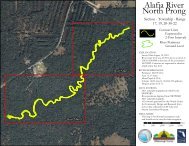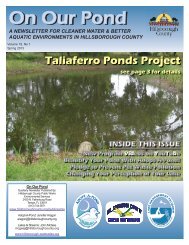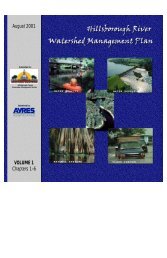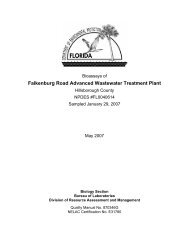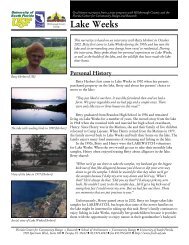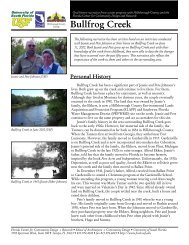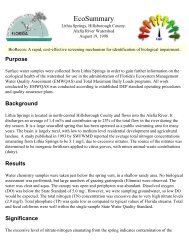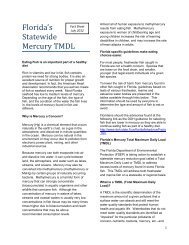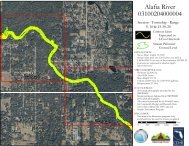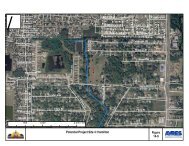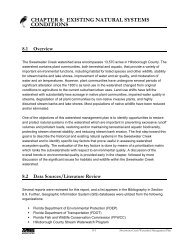Rocky Brushy Creek Watershed Mgmt. Plan (2007) -- Part 2
Rocky Brushy Creek Watershed Mgmt. Plan (2007) -- Part 2
Rocky Brushy Creek Watershed Mgmt. Plan (2007) -- Part 2
You also want an ePaper? Increase the reach of your titles
YUMPU automatically turns print PDFs into web optimized ePapers that Google loves.
CHAPTER 8Funding Program (NRTFP). The National Highway System Designation Act (NHS Act) of1995 amended and revived the NRTFA. The Transportation Equity Act for the 21 st Century(TEA-21) amended the previous legislation and provided six years of funding. In Florida,the RCT is administered by the FDEP in coordination with the U.S. Department ofTransportation, Federal Highway Administration.2. Florida Recreation Development and Assistance Program - The Florida Recreation andDevelopment Assistance Program is a competitive program that provides grants foracquisition and development of land for public outdoor recreation use.3. FDOT Transportation Enhancement Program - The Florida Department of Transportation(FDOT) Transportation Enhancement Program provides funds for transportation-relatedactivities designed to strengthen the cultural, aesthetic, and environmental aspects ofFlorida’s intermodal transportation system. The program provides for implementation of avariety of projects including bike and pedestrian facilities. Projects are selected by localmetropolitan planning organizations and the FDOT district offices.4. Florida Scenic Highways Program - The Florida Scenic Highways Program isadministered by the FDOT. This program works with local governments to identify andprotect scenic roadways throughout the state. Designated corridors, including associatedgreenway and trail projects, may be eligible for increased funding opportunities.8.6.4 Natural Systems RestorationThe <strong>Rocky</strong> <strong>Creek</strong> - <strong>Brushy</strong> <strong>Creek</strong> watershed reflects a variety of land uses that have resulted in theboth the conversion of natural lands to urban, suburban, commercial, and agricultural developmentand the degradation of remaining native habitats. Increased future land development will continueto produce adverse impacts to natural systems. Consequences of development have included:reduction in biological diversity, overall habitat quality, abundance, and distribution, as well ashabitat fragmentation, species isolation, impairment of water quality, and loss of wildlife corridors.In order to alleviate the negative impacts of development, it is necessary to protect and restorenatural systems within the watershed through land acquisition, conservation methods, publicenvironmental education, exotic plant species removal, replacement of native habitats where theyhave been eliminated and/or degraded. High quality natural areas are a priority to both the humanpopulation and animal populations within the watershed, and the implementation of a meaningfulrestoration/protection plan will produce substantial ecological and aesthetic benefits.Restoration - There are several candidate areas for restoration. Chief among these areas are thelocations at which <strong>Rocky</strong> <strong>Creek</strong> and <strong>Brushy</strong> <strong>Creek</strong> have been crossed by major roadways,electrical transmission facilities, and the railroad grade. At all of these locations, the <strong>Creek</strong>s havebeen subject to factors that have degraded stream habitat, discouraged wildlife establishment,allowed the invasion of exotic plant species, resulted in trash accumulation in the channel, andnegatively affected water quality.8-47<strong>Rocky</strong>/<strong>Brushy</strong> <strong>Creek</strong> <strong>Watershed</strong> Management <strong>Plan</strong>



